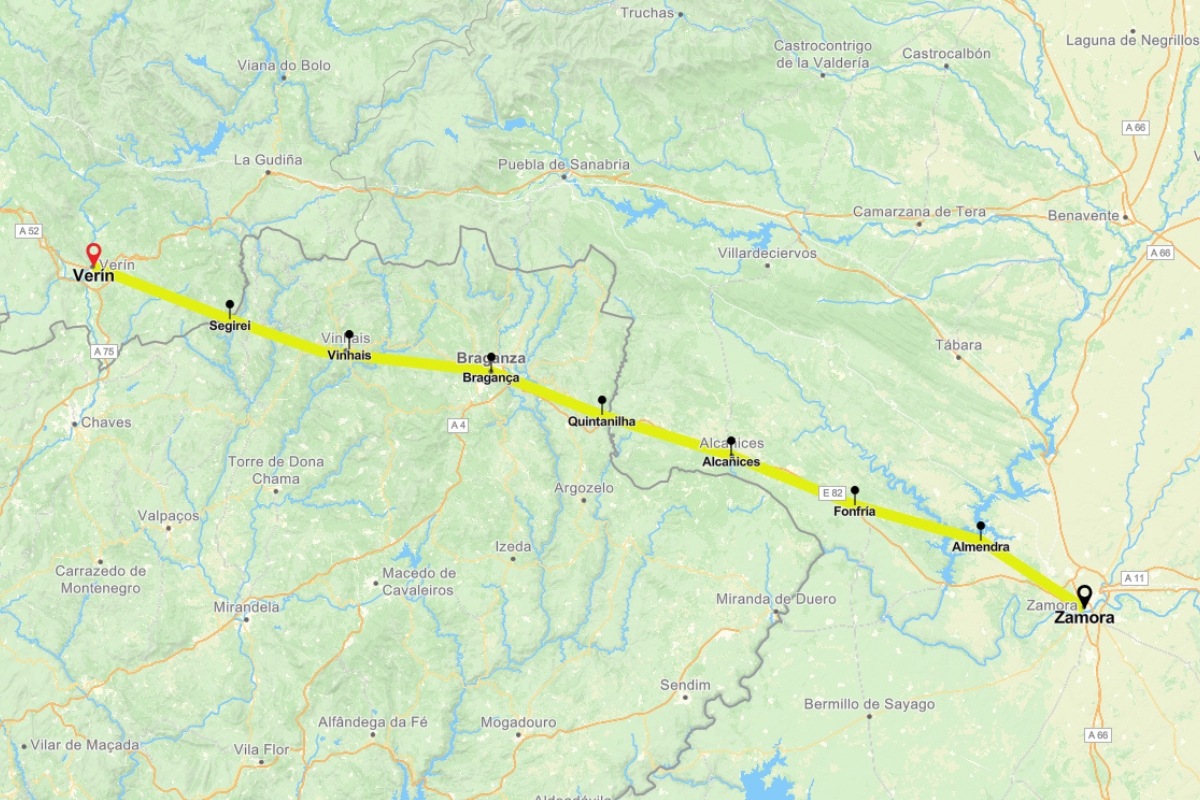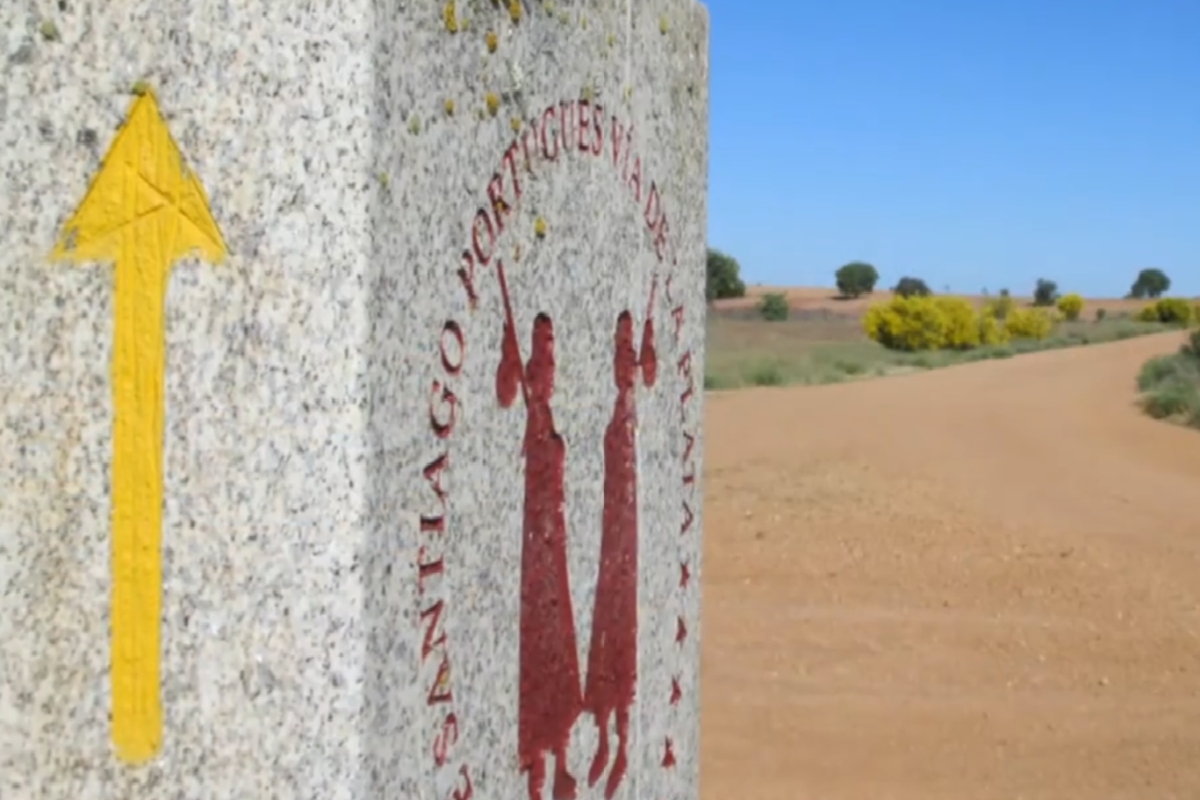The Portuguese Way of the Vía de la Plata is one of the many routes of the Camino de Santiago that connects the city of Zamora with northern Portugal and later joins the Sanabrés Way in the Galician town of Verín, continuing on to Santiago de Compostela. Unlike the better-known Portuguese routes, such as the Portuguese Way or the Portuguese Coastal Way, which cross the country from south to north, this route ventures into the historic region of Trás-os-Montes, following a southeast–northwest axis. Over time, it has received alternative names such as the Mozarabic-Portuguese Way of Saint James, Zamorano-Portuguese Way, Bragança Way, or even Alistano Way of Saint James.

Zamora Cathedral
Origin and History
The Portuguese Way of the Vía de la Plata has its roots in ancient medieval routes that linked Zamora with Trás-os-Montes, traveled by muleteers and pilgrims since the early centuries of the Jacobean tradition. During the Middle Ages, it served as an important corridor for cultural exchange, as evidenced by the bridges, hospitals, and chapels still preserved along the way. The route suffered from the political division following Portugal’s independence from León in 1143 and, later, a long period of neglect during the Salazar and Franco dictatorships, which imposed strict border controls. This isolation explains why it remains one of the least-known pilgrimage routes.
In the 21st century, a process of recovery and waymarking began, led by the Ramos de Castro Foundation, the Galician regional government, and local associations. A notable example was the 2009 community initiative in Soutochao, which reopened and marked the section between Vinhais and Verín, helping to rescue this historic route from obscurity.

Pilgrims hostel in Zamora
Itinerary and Main Stages
The total distance from Zamora to Santiago de Compostela is almost 400 kilometers, divided into a little more than 200 km to Verín and, from there, another 180 km along the Sanabrés Way. Below are the eight main stages of the route, from Zamora to its junction with the Sanabrés Way in Verín.
- Stage 1: Zamora – Almendra (approx. 24 km): Urban and transition stage through the Aliste region, passing La Hiniesta and Valdeperdices. Hostel in Almendra.
- Stage 2: Almendra – Fonfría (approx. 33 km): Route through Muelas del Pan, Ricobayo, and Cerezal de Aliste. Confusing waymarks near Monte de Víboras. Fonfría has a basic hostel without kitchen.
- Stage 3: Fonfría – Alcañices (approx. 22 km): Rural stage through Fornillos, Ceadea, Arcillera, and Vivinera. Alcañices offers full services and a hostel with hospitalero.
- Stage 4: Alcañices – Quintanilha (approx. 26 km): Transition stage into Portugal. The route crosses the Maçãs River via an ancient bridge. In Quintanilha, the “Casa del Peregrino” hostel offers kitchen and showers.
- Stage 5: Quintanilha – Bragança (approx. 25 km): Poorly marked section. Recommended route through Palacios, S. Julião, and Gimonde to avoid detours. In Bragança, accommodation available at the Pousada da Juventude and the Fire Station.
- Stage 6: Bragança – Vinhais (approx. 29 km): Mountainous and demanding terrain, passing through Portela, Castrelos, and Soeira, crossing the Tuela River via a medieval bridge. Accommodation at the fire station in Vinhais.
- Stage 7: Vinhais – Segirei (approx. 24 km): Stage with steep gradients through Soutelo, Aboa, Candedo, and Edral (charity hostel). Weak waymarking; GPS highly recommended.
- Stage 8: Segirei – Verín (approx. 25 km): Entry into Galicia via Soutochao, passing Lamardeite and Vilardevós. From Verín, pilgrims may continue toward Laza or follow the alternative route through Xinzo de Limia, Allariz, and Ourense toward Santiago.

Map of the Portuguese Way of the Vía de la Plata
The Compostela and the Route Connections
Pilgrims completing the Portuguese Way of the Vía de la Plata can obtain the Compostela certificate upon reaching Santiago de Compostela. Although not officially recognized by the Pilgrim’s Office, its connection with the Sanabrés Way in Verín fulfills the requirement of walking at least the last 100 km along an official route.
This path serves as a natural link between the Vía de la Plata and the Sanabrés Way, offering a cross-border alternative to the classic route. Moreover, in Verín it also converges with the Portuguese Interior Way from Viseu, creating a Jacobean corridor of great cultural and spiritual value, uniting historic routes from Spain and Portugal toward the common goal of Santiago de Compostela.

Pay attention to the signs along the route
Heritage and Landscape: a Journey through Iberian Diversity
The Portuguese Way of the Vía de la Plata combines Castilian austerity, the lushness of Trás-os-Montes, and the freshness of Galicia. Starting in Zamora, the route enters northern Portugal, crossing the mountains and valleys of the Montesinho Natural Park, home to centuries-old chestnut and oak trees. Finally, in Galicia, it descends into the fertile Tâmega Valley, where grapes for the Monterrei D.O. wines are cultivated, offering sweeping views of great natural beauty.
A Visigothic Treasure
One of the route’s most emblematic monuments is the Visigothic church of San Pedro de la Nave (7th century), considered by some historians as one of the earliest pilgrim hostels in the world. Originally located on the banks of the Esla River, it was moved stone by stone to its current location in El Campillo in 1930, after the Ricobayo reservoir threatened to submerge it. Declared a National Monument, it stands as a tangible testament to the deep antiquity of this pilgrimage route.
In addition to San Pedro de la Nave, the route preserves a remarkable heritage that includes the castles of Bragança, Alba, and Monterrei and the Roman bridges of Gimonde and Soeira.

You will be pleasantly surprised by the reservoirs, rivers, and streams along this route
Current State: Waymarking and Infrastructure
Although not officially recognized by the Santiago de Compostela Pilgrim’s Office, this historical route is documented by institutions such as the Spanish Federation of Friends of the Camino de Santiago (FEAACS) and the National Geographic Institute (IGN). Many local associations are also actively maintaining and promoting the path.
The route’s waymarking is inconsistent: clear in parts of Zamora, but poor in sections of Portugal where arrows may be faded or misdirected. Updated FEAACS guides, IGN maps, and Camino de Santiago apps for navigation are highly recommended.
The network of hostels is limited but sufficient, with options in Fonfría, Alcañices, Quintanilha, Bragança, and Verín, among others. Other types of accommodation such as rural houses, guesthouses, and parish lodgings are available. In Portugal, accommodation is often found in fire stations. As many villages are small, planning for stages, overnight stays, meals, and supplies is essential.
The Portuguese Way of the Vía de la Plata stands as a living testament to the shared history of the Iberian Peninsula, reborn after centuries of neglect thanks to the efforts of local communities and associations. Its cross-border nature, cultural richness, and landscape diversity make it an ideal route for those seeking an authentic and less-traveled pilgrimage experience. From Viajes Camino de Santiago, we can assure you that this route offers the profound reward of walking a historic path that combines culture, nature, and spirituality, reaffirming the deeper meaning of pilgrimage to Santiago de Compostela.












Leave A Comment